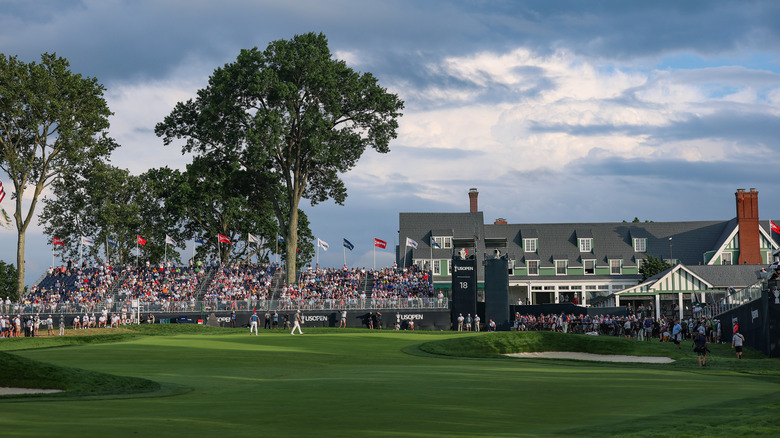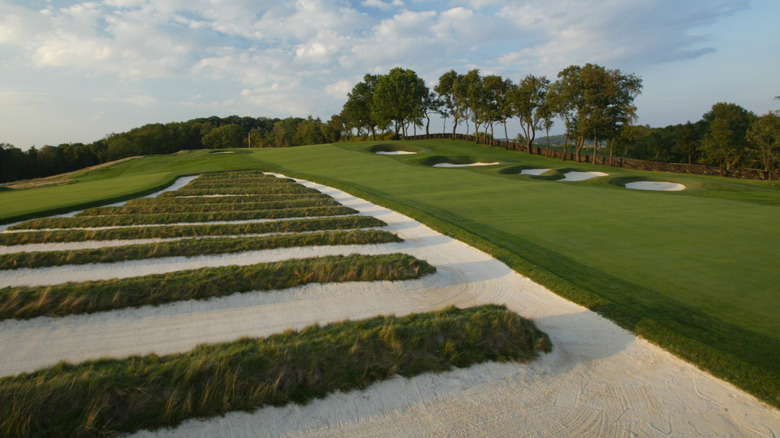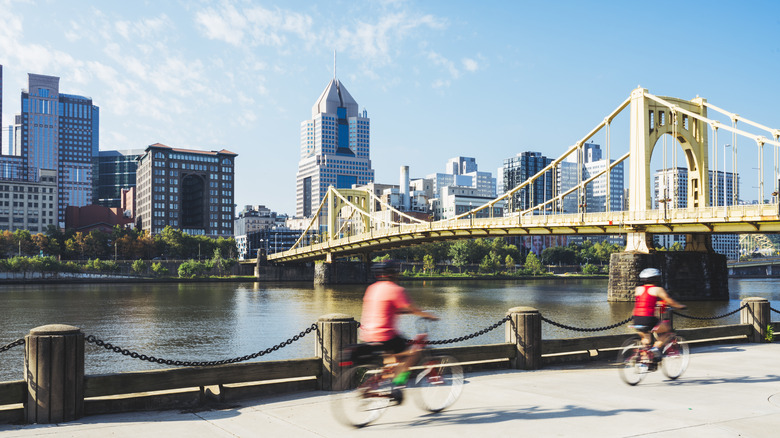
A torture chamber. A brute. The beast. Such metaphors may conjure a scary rollercoaster or a triathlon — or the feared Oakmont Country Club golf course in Oakmont, Pennsylvania, just 14 miles from Pittsburgh. Oakmont's challenging terrain, with nasty rough and lightning-fast, oversized greens, has been testing the patience of golfers for more than 120 years — including those at the U.S. Open championship — and has earned the dubious distinction for the hardest course in America, according to a PGA
Tour ranking. More agony of defeat awaits players in the future when Oakmont hosts three additional U.S. Opens between 2033 and 2049.
And yes, this misery is all by design thanks to steel magnate Henry Clay Fownes, who discovered golf in what he thought was the sunset of his life. A doctor's misdiagnosis, which wrongly predicted a terminal illness, prompted Fownes to sell his iron and steel company to Andrew Carnegie and take up golf as a new hobby. He took to the game quickly and began winning championships nationwide. Finding courses too easy, he decided to build his own and bought 191 acres of farmland for $78,500 and transformed them into a 6,400 yard golfer's hellscape, a course 400 yards longer than typical courses of the era.
When Fownes' son, William C. Fownes, Jr., took over course operations in 1910, he added hazards such as trees and bunkers after studying players' wayward shots. The punishing architecture of the course fit into his golf philosophy: Earning a par was a privilege. "A shot poorly played should be a shot irrevocably lost,"Fownes famously said. Eventually, about 10,000 trees were removed and a recent restoration expanded greens to an average of 8,100 square feet, 20% bigger than before, and complete redesigns of bunkers, which also grew in size by one-third to 1,964 square feet.
Read more: The 14 Best Botanical Gardens In America, According To Reddit
Surviving Bunkers, Rough, And Greens At Oakmont Country Club

The method to the course's madness is imbuing challenges at every step of the game. Playing bogey golf — one over par, the course's typical benchmark — can be a badge of honor at Oakmont. 2025 U.S. Open winner J.J. Spaun snuck in a one-under par score for the four-day tournament, but that's not the norm. Over the previous two Opens in 2007 and 2016, only four out of 312 players finished under par for the week.
When you tee off at Oakmont, you find narrow fairways at only 28 yards wide. Even if you land your shot in regulation, your next one may end up in five-inch rough or one of the course's 168 bunkers, which average a staggering nine per hole. At the 2025 U.S. Open, Bryson DeChambeau struggled on the par-5 12th hole with three chip shots landing in the rough without hitting the green. Prayers are sorely needed on the third hole — a fiendish, uphill 462-yard par 4 — where your shot may land in the notorious "Church Pews" bunker: 102 yards of sand crisscrossed with 13 berms of grass. Good luck aiming for the slick green set atop a high ridge. The greens at Oakmont run about 50% faster than typical courses and were reportedly slowed down for the U.S. Open.
Social media laps up players' mis-hits. Grant Horvat tries to digest the nuttiness of the rough on a practice round on TikTok. CBS posted a YouTube Short of DeChambeau calling his chip shot "more than half-baked" as it lay obscured in the rough. The silver lining at Oakmont? There are no water hazards, such as lakes and ponds — just some ditches placed in way inconvenient locations.
Golf Elsewhere Or Visit Pittsburgh For Museums And Bike Rides

More than likely, you will never play Oakmont. This private club, with initiation fees estimated at $150,000, has only about 835 members. So, unless you're friends with a member or an aspiring PGA professional, it's not happening. But the Pittsburgh area offers a number of public courses — Pennsylvania alone has more than 500 — featuring championship-level challenges. Test your game on the lush fairways, fast greens, and the copycat "Church Pew" bunker at Quicksilver Golf Club in Midway, which is just about 10 minutes from the Pittsburgh International Airport, for $65 to $75 for 18 holes. Eighteen holes of demanding terrain will set you back $95 to $175 at Olde Stonewall Golf Club in Ellwood City, about 45 minutes from Pittsburgh.
Don't forget to explore the criminally underrated city of Pittsburgh, which is experiencing a tech boom, thanks to the city's universities such as Carnegie Mellon and tech start-ups. The city has even seen a modest population increase after the demise of the steel industry in the 1970s. Famous people have made culture a thing here with their museums. There are four Carnegie museums in Pittsburgh established by industrialist Andrew Carnegie. The Carnegie Science Center — the city's most visited museum — features hands-on displays, the USS Requin submarine, and planetarium shows. The Carnegie Museum of Art is considered one of the city's crown jewels. Then there's Pittsburgh native Andy Warhol's museum, which holds the world's largest collection of his works, including his iconic Campbell's Soup Cans and celebrity portraits. For an outside view of this City of Bridges, rent an electric bike and ride the Three Rivers Heritage Trail along the Allegheny, Monongahela, and Ohio rivers. And be sure to look up on how to experience even more stunning skyline views.
Ready to discover more hidden gems and expert travel tips? Subscribe to our free newsletter for access to the world's best-kept travel secrets.
Read the original article on Islands.














